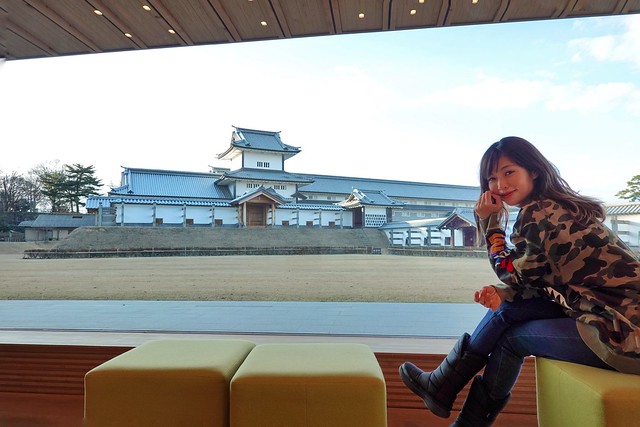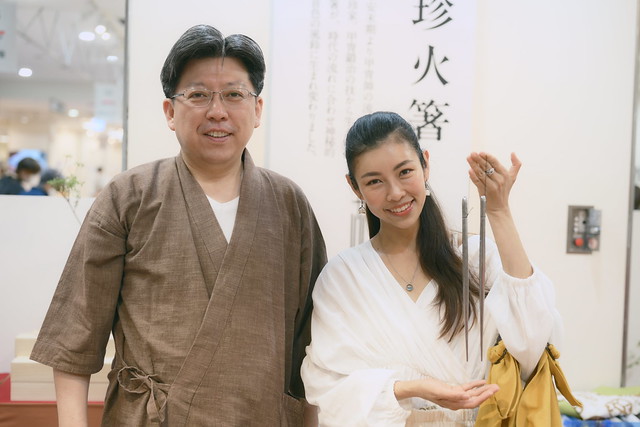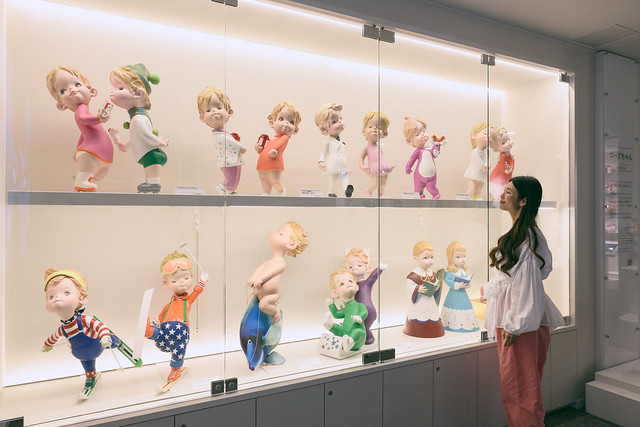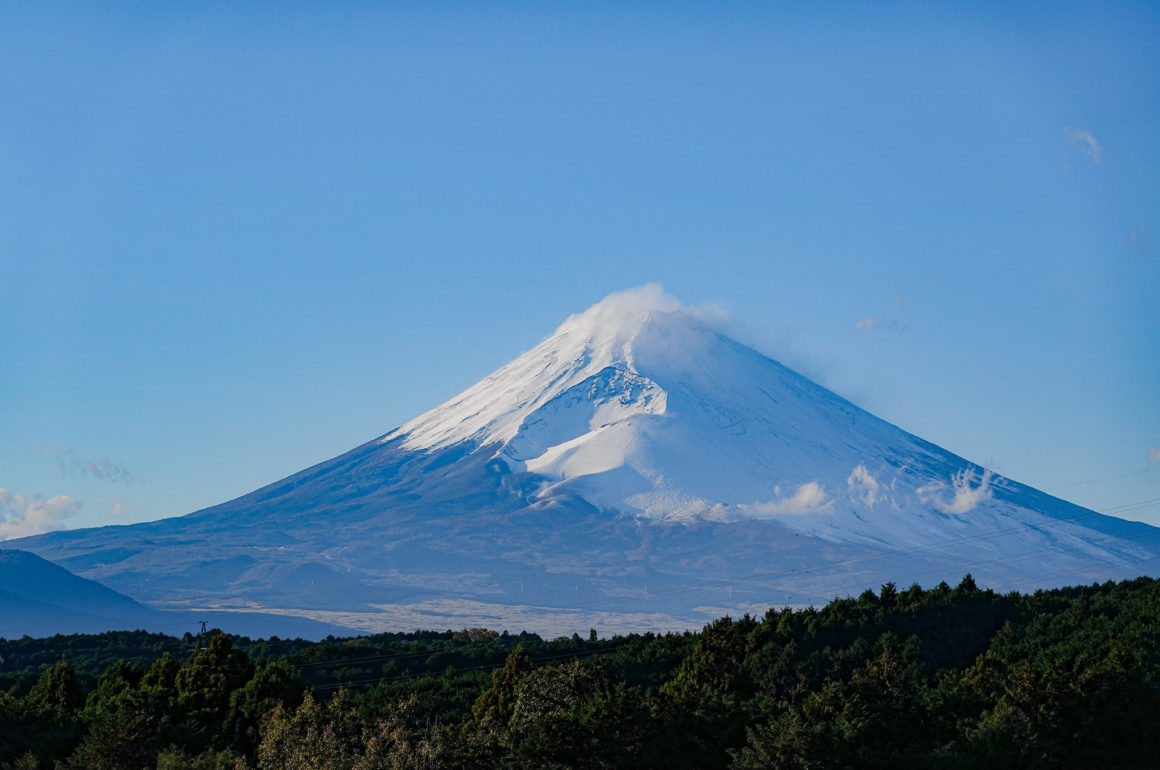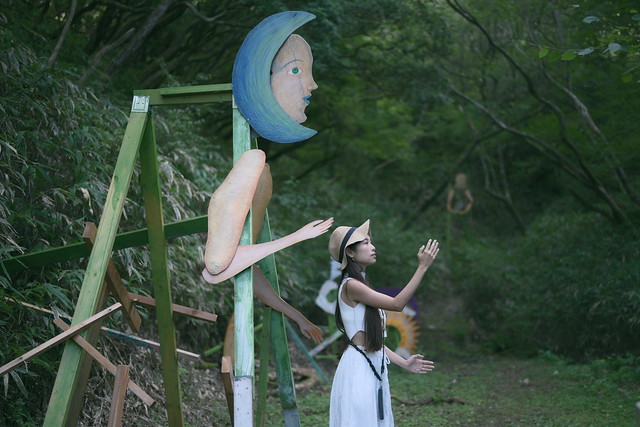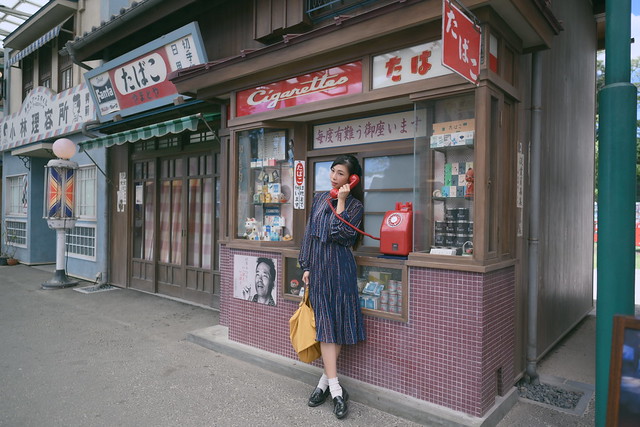Things have been slowly looking better for Japan and I have spent the first two months of the year busy exploring new places around Japan – virtually or not. The allure of Japan is simply endless. Today, I will be introducing a new itinerary to explore the Central Japan region.

We will be looking at 4 main prefectures: Gifu, Toyama, Ishikawa and Fukui, with Nagoya city as the base for this travel itinerary. The Central Japan Region is a year-round destination that offers an abundance of nature and delicious food every season. My favorite is still winter, though, given the inland of Central Japan gets plenty of snowfall in the colder months, making it a magical wonderland especially for tropical creatures like me!
Plan your next winter holiday in Central Japan by using the Takayama-Hokuriku Area Tourist Pass to enjoy five days of unlimited rides on designated JR local and limited express trains, the Hokuriku Shinkansen, and buses within the Central Region.
You can check some of their highlight spots at the Central Japan Travel Fair specially for Singaporeans!
I am putting together a day-by-day itinerary, including some of the places I have been in the past, and some that I have not and would really love to visit, together with information I hope will be useful for your planning. All of us can’t wait for Japan to open its border again. Here is a sample itinerary that can help you get the most value out of your Takayama-Hokuriku Pass:
DAY 1
Let’s spend the first day exploring Nagoya city, before moving on to Takayama, Gifu prefecture.
STAY: Nagoya Marriott Associa Hotel
If you fly in the day before, this accommodation might be a good choice – directly connected with the JR Nagoya station, this luxurious hotel’s service will sure live up to your expectation being a customer oriented, comfy and extremely convenient accommodation. You may also sample local Nagoya dishes such as Kishimen, Miso Katsu and roasted pork ham from Mikawa.
*Note: Leave your luggage at hotel and pick them up before moving to Takayama
EAT: Nagoya-meshi (Kishimen)
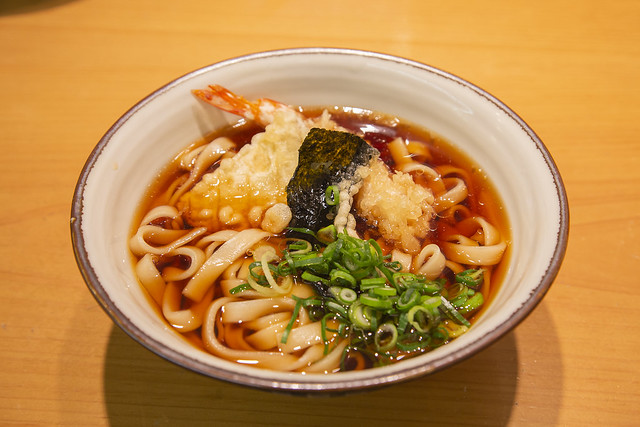
Nagoya has plenty of gourmet surprises for all foodies alike, so don’t make the mistake by sleeping too early – head out to try all Nagoya’s specialty cuisines! One of the most popular choice is kishimen. Kishimen is a noodle dish known for its hirauchi (flattened) noodles made from wheat flour, water, and salt. However, don’t be fooled as not all flattened noodle dishes are considered kishimen. By Japanese standards, noodles with a width wider than 4.5mm and thickness of less than 2.0mm can be called kishimen. How very meticulous and Japanese with its strict standards!
For those who are not a fan of miso, kishimen can also be enjoyed with pasta sauce, hot soup, or served cold, which is great for summer time.
SEE: Nagoya TV Tower and Hisaya Odori Park

From Nagoya Station, hop on a 10-minute subway ride that brings you to Nagoya TV Tower, which is only a few minutes’ walk from Oasis 21. The tower was originally built to mark the reconstruction of the city after WWII as a tourist attraction and TV broadcasting tower in Nagoya at the time. Little did I know, this symbol of Nagoya actually preceded my favorite Tokyo Tower as the oldest transmission tower in Japan, built in 1954 by the same professor who also designed Sapporo TV Tower and world icon Tokyo Tower.
Since you are in the area, don’t miss out taking a leisure stroll along Hisaya Odori Park, the hottest stylish hangout in Nagoya City after being renovated at end of September 2020. I was just there when it was newly reopened and was impressed by how trendy it looks now. There are a total of 4 areas in the park with plenty to offer, you can go cafe hopping and check out popular names such as ESPRESSO D WORKS and FabCafe, shop till you drop at fashionable stores or just enjoy the greenery with the Nagoya TV Tower on the background.
SHOP: Uniqlo, Bic Camera
You will never run out of things to shop in Nagoya! You can find mega popular shopping chains such as Uniqlo Bic Camera for pretty much everything you need. Located on the 9th and 10th floor of the JR Gate Tower is Bic Camera which offers a wide selection of electronics, game software, and even alcoholic beverages. If you are in the mood to get fashionable or just happen to need an extra scarf, just go one floor up to Uniqlo and GU, its sister brand which offers even more affordable clothings.
EAT: Café Gentiane (Piyorin)
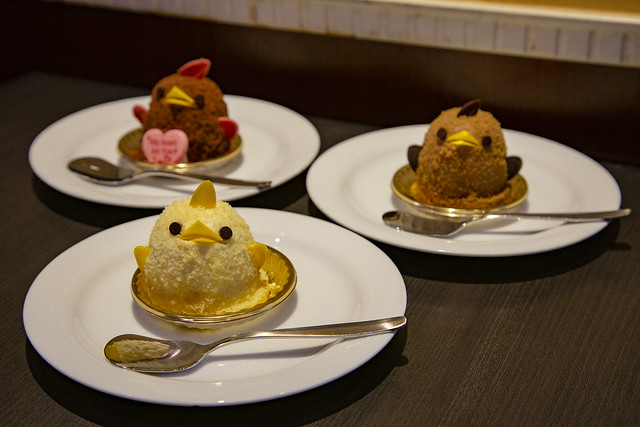
Now it’s time to leave Nagoya and move on to our next destination. While waiting for your train, why not take a break and indulge in a sweet treat? Cafe Gentiane sits within JR Nagoya station and is home of the adorable and delicious chick shaped Piyorin cake with pudding inside. Each of the cake is handmade using Nagoya Cochin eggs under the skillful hands of artisans. You can either enjoy it fresh at the store or bring it along with you as a train snack or supper at hotel. One piece of cake is priced around ¥380.
MOVE: Nagoya – Takayama

Take Hida Wide View limited express from Nagoya Station to Takayama Station, and then the Nohi bus from Takayama Station to accommodation.
STAY: Hodakaso Yamano Hotel
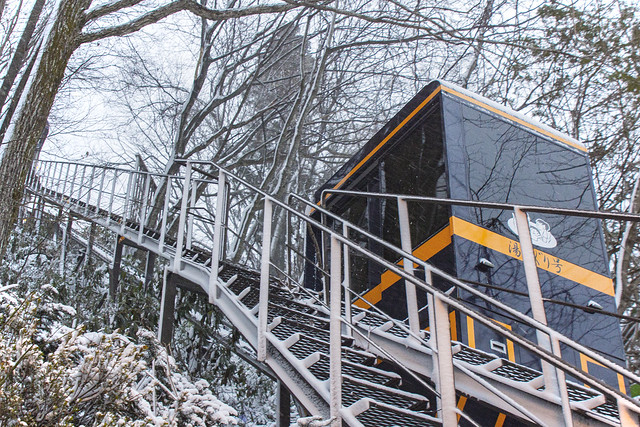
It’s time to enjoy authentic ryokan-style experience! Take a cable car that leads you to the spacious outdoor area – indulge in a scenic outdoor hot spring in the nature of mountainous Takayama. Of course, when in Takayama, you shouldn’t miss the dinner featuring ultra popular Hida beef too!
DAY 2
This day, we will be exploring the charm of Takayama area, hop over to World Heritage Shirakawago, and we will be taking the Nohi bus rides (included in the pass!) for all the attractions of the day before moving over to Takaoka city of Toyama prefecture.
SEE: Shinhotaka Ropeway
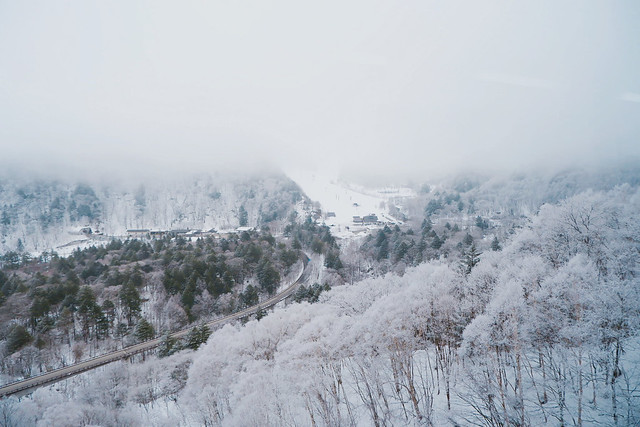

Shinhotaka Ropeway is the only double-decker ropeway in Japan, talk about uniqueness! The highlight of traveling to Central Japan in winter is chance to see the absolutely magnificent Japanese Alps Mountain Range up close. At the rooftop observatory deck located at the upper station (Nishihotakaguchi Station) at an altitude of around 2,156 meters, you can enjoy a 360-degree panoramic view of the surrounding mountains and valleys covered white in pristine snow.
There is also a bakery located on the 2nd floor of Shirakabadaira Station where you can enjoy crispy croissant and enjoy a cuppa of warm liquid hug.
EAT: Takayama Ramen
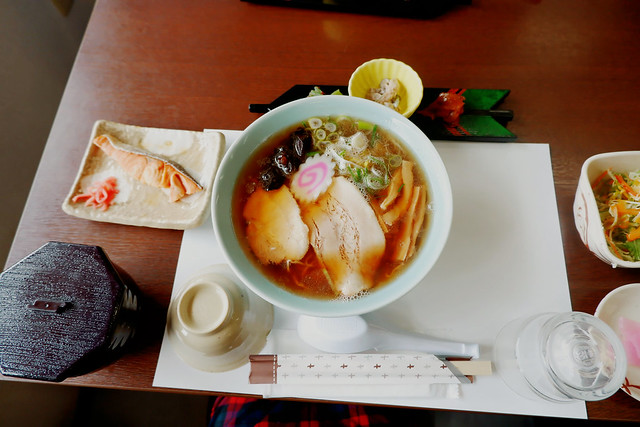
Ramen is a universal favorite, and in this region, the delish noodle dish is locally known as “Takayama Ramen”. Featuring rich broth made with bones, vegetables, and katsuobushi (dried bonito flakes) enriched with soy sauce and miso, this local dish is a popular lunch option and you may sample different flavors from different restaurants.
SEE: Takayama Historical District
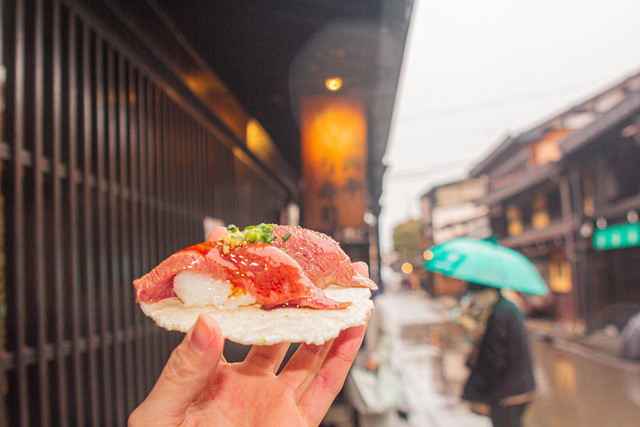
After a hearty bowl of ramen, it’s time to move on to Takayama Historical District. Located near Miyagawa River, this old town of preserved and restored buildings featuring typical dark wood and white-washed warehouse walls remained from the Edo period gives a bonafide historical experience for those who have a penchant for Japanese architecture of the bygone days. Spice up your atmospheric stroll further with a Hida Beef Nigiri or Hida beef skewers easily found along the streets of this charming old town!
EAT: Hida beef
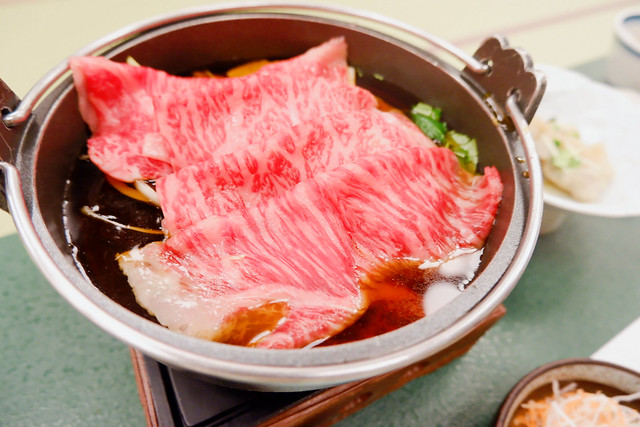
The aforementioned beef is not to be missed when you are in Central Japan region. Gaining nothing short of international fame, Hida beef refers to the Kuroge Wagyu breed of cattle raised in Gifu Prefecture has earned high praises for its excellent quality in terms of colour, texture, beautiful marbling and taste. It is said to be one of the best beef brands in Japan so don’t leave Japan with the regrets of missing out. Even for those whose are on a budget, you can still enjoy this high-class delicacy by going for the many “B-class” Japanese gourmet cuisines. Many popular dishes here use this prized ingredient generously, you can affordably sample a Hida beef croquette for as low as 250 yen! Hida beef can be enjoyed in a steamed bun, broiled skewer, or as a sushi.
SEE: Shirakawa-go
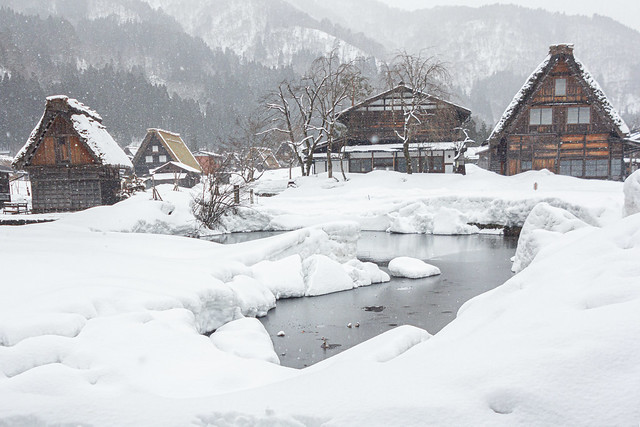
From Takayama Station, take the Nohi bus direct to Shirakawa-go Village, possibly the most popular destination in the Central Japan region. This route is the most preferred access mode to Shirakawa-go and is very fast-selling especially in the winter, so it’s better to reserve your tickets beforehand. Tickets can be exchanged at Nohi Bus Center right next to Takayama Station.
Undoubtedly a must-see UNESCO World Heritage Site in Gifu Prefecture, Shirakawa-go is famous for its traditional gassho-zukuri farmhouses, which roofs are constructed at a steep angle to allow heavy snow to fall off easily in winter. While the snow-covered houses during winter time is iconic, Shirakawa-go offers wonderful views in every season so no matter which time of the year you visit, one is for sure guaranteed each season’s unique charm.
A five-minute shuttle ride for 200 yen (one-way) or a 25-minute walk up the mountain will lead you to an observation deck overlooking the whole area. This is the place where all the breathtaking photo of the village you see on Instagram is taken at.
*Note: You can put your luggage at the coin lockers or luggage room near Shirakawago Bus Terminal. They are located at the back of the room or come to ask the staffs for that.
MOVE: Takaoka City
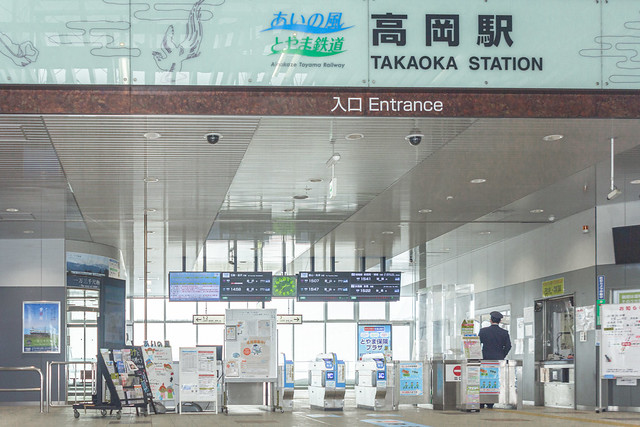
After marveling at the famous world heritage site, it is time to venture to a new prefecture. Take the World Heritage Bus from the village bound for Takaoka City, the hometown of Fujiko F. Fujio – father of Doraemon, so fans of this eternally popular manga character should never miss out the next part of the itinerary!
SEE: Doraemon Tram
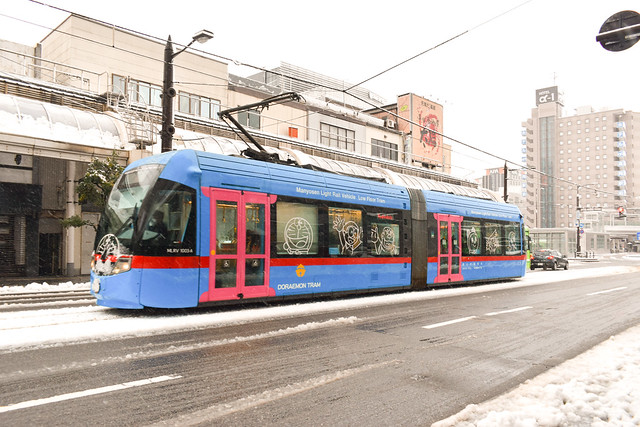

Is there another better way to move around town than riding a tram with your childhood friends? To pay homage to one of the greatest manga ever made in history there’s a Doraemon tram running from Takaoka station to Koshinokata Station.
EAT: Toyama Bay Sushi
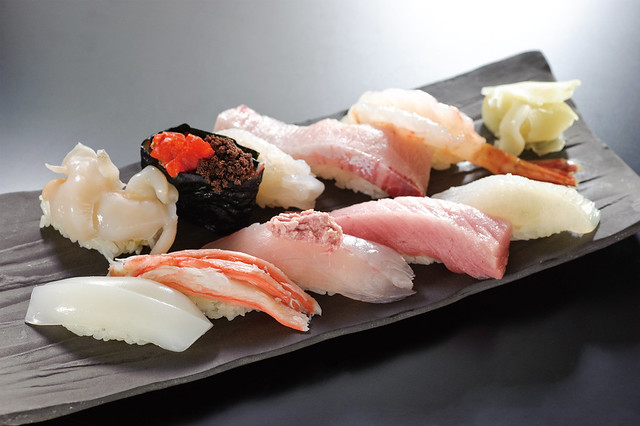
Some hardcore sushi fans claim that Toyama has the best sushi in Japan, so it’s your chance to see if that holds true.
Surrounded by the abundance of Sea of Japan, Toyama bay produces some of the country’s freshest seafood products. One of the most unique delicacy found in the area is shiro-ebi, a translucent white shrimp so sweet and full of umami that it is lovingly nicknamed the “Jewel of Toyama Bay”.
There are many high-end sushi shops you can splurge on this rare gem of the prefecture, but they are also available in many other wallet-friendly restaurants in the form of tempura and even ramen topping!
DAY 3
SEE: Shogawa Gorge, Toyama
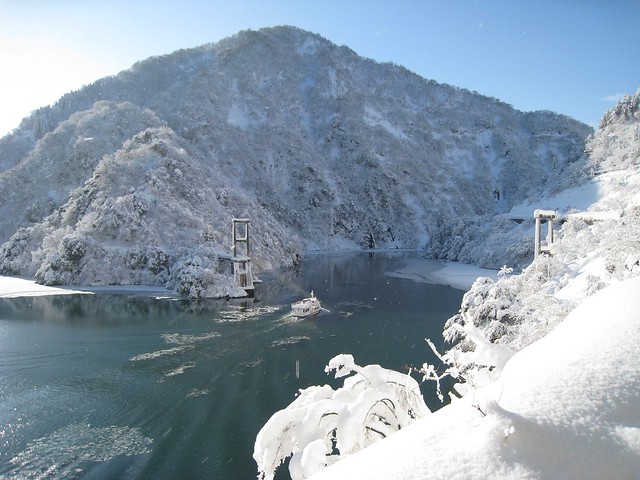
If you are a morning person, consider getting up early and take a bus from Takaoka Station to Shogawa Gorge for a relaxing boat cruise. For 2,800 yen, you can enjoy the spectacular view of Shogawa Gorge by riding a sightseeing boat that operates on the Shogawa Gorge between Komaki Dam and Omaki Onsen.
SEE: Zuiryuji Temple
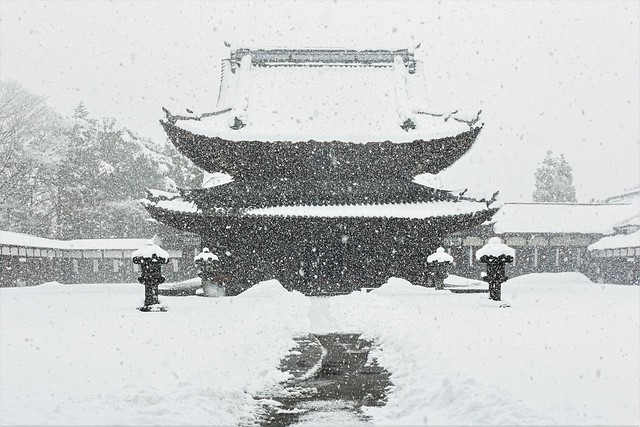

After a healing excursion, you may opt to visit the Zuiryuji Temple in Takaoka city and have lunch at Yasuragi-an. This National Treasure features an interesting sight where the main gate, Buddha hall, and Dharma hall stand in a line, and the temple buildings are laid out symmetrically left and right, interconnected by roofed passageways in a beautiful and powerful sight.
SEE: Doraemon Postbox
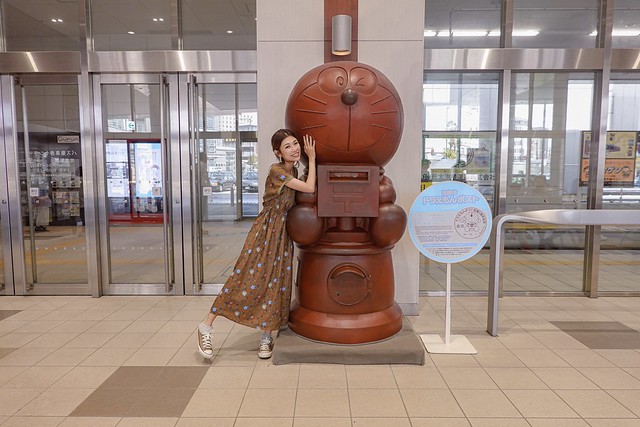
Moving on, hop on a bus heading towards Takaoka Station where you will be greeted by… yes, the giant earless cat we all adore – Doraemon – and it is clad in copper standing tall at Takaoka Station. This is a real postbox where your letters and postcards will be stamped with a commemorative Doraemon postmark. What a lovely surprise souvenir it makes, so considering bringing some postcards over!
DO: Handcraft Experience at Nousaku Factory, Takaoka City

This is the final attraction of the day, and not too far away from Takao Station so you may want to grab your luggage and cab to Nousaku Factory for a little cultural immersion. Takaoka City is historically known as a center of metal casting, and this industry still thrives in the city today. There are also workshops you could join, hand-making your very own tin accessories.
MOVE: Kanazawa Station, Tsuzumi Gate

After visiting Nousaku Factory, let’s move on to Shin-Takaoka station just in time to hop on the Hokuriku Shinkansen bound for Kanazawa City.
Once you arrive at Kanazawa Station, one of the most aesthetically striking train stations in Japan and marvel at the massive Tsuzumi-mon Gate, looking like the form of a traditional torii gate where the pillars looks like Tsuzumi – a drum played in Noh Theater, an art form that flourished in the glorious past of Kanazawa.
EAT: Kagaya
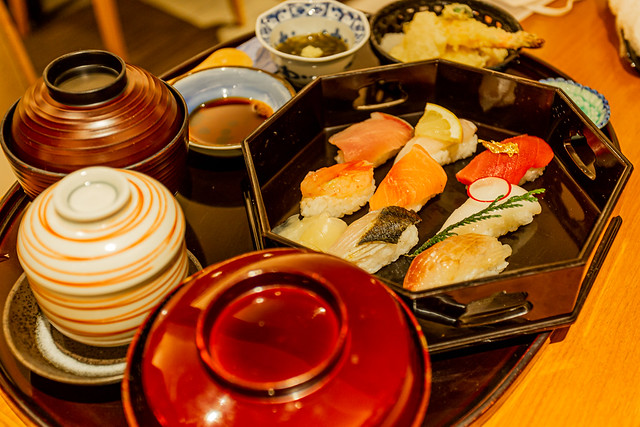
I have never been here before, but I heard good things about this swanky restaurant serving traditional Japanese food conveniently located within the station, so it’s on my list in my next visit to Kanazawa. Anyway, once you are in Kanazawa, don’t worry a thing about food anyway, you will be too spoilt for choice in this gourmet city.
STAY: Hotel Wing International Premium Kanazawa Ekimae
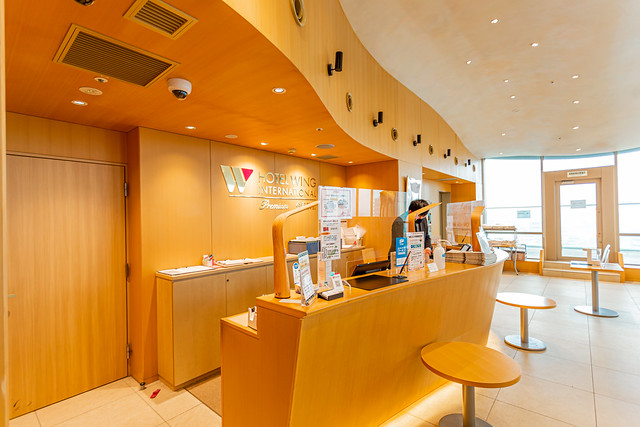
A fairly new hotel with stylish design, credit given to how accessible it is from the station.
DAY 4
One never run short of things to do in Kanazawa city. On the fourth day, we can leisurely spend an entire day just to explore this charming historical old castle town well-known for its well-preserved Edo-era districts, art museums, magnificent garden and regional handicrafts. Here one can try both modern experiences while enjoying its beauty from the days bygone.
SEE: Kenrokuen Garden
From the hotel you can take a community bus to Kenrokuen Garden. Known as one of Japan’s Three Great Gardens, the entrance fee of 320 yen feels like a steal! The spacious grounds used to be the outer garden of Kanazawa Castle and feature a variety of flowering trees of seasonal natural beauty, including the snow-covered landscape with yukitsuri (snow hanging), a method of protecting the branches of the pine trees in the garden to prevent them from breaking due to heavy snow.
SEE: Kanazawa Castle, Nezumitamon Gate and Nezumitamon Bridge
Kanazawa Castle used to be seat of the Maeda Clan, a feudal domain ranking second only to the Tokugawa possessions in terms of size and wealth, from 1583 until the end of the Edo Period. Since then, the castle has been extensively rebuilt and renovated due to numerous fire incidents. In July 2020, the restoration of Nezumitamon Gate and Nezumitamon Bridge on the west side of Kanazawa Castle were completed, so do take this chance to admire this ancient heritage in a new light.
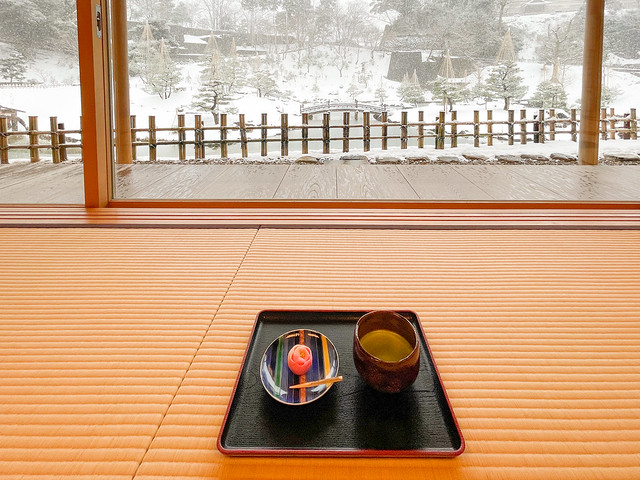
Pop by also the Gyokusen’an Rest House located in the area of Kanazawa Castle Park, a tea house overlooking the Gyokusen’inmaru Garden where you can wind down and have some quiet time with, a cup of tea, wagashi and nature all to yourself.
EAT: Omicho Market
A 10-minute walk brings you to Omicho Market, Kanazawa’s famous fresh food market. Think of it as Kanazawa’s Tsukiji Market – hundreds of stalls and restaurants selling fresh seafood waiting for your pick!
SEE: Higashi Chaya District
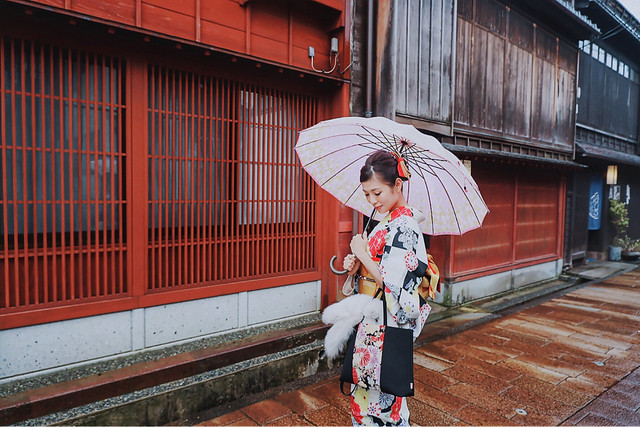
This iconic attraction is no stranger to anyone who has heard of Kanazawa, and is one of Kanazawa’s largest geisha districts. While it’s a little cheesy, dressing up in a kimono and stroll around the old streets does count as one of the most authentic experiences you can have at Higashi Chaya District. For some extra internet points, don’t forget to try out the popular soft cream adorned with gold leaf – a Kanazawa specialty!
MOVE: Awara Onsen
Leave your luggage at the hotel and get back for them at end of the day. Then, take Thunderbird limited express train heading to Awara Onsen in Fukui Prefecture.
STAY: Awara Onsen Matsuya Sensen
Take a hotel shuttle bus from JR Awara Onsen Station to the ryokan.
SEE: Awara Hot Spring Footbath
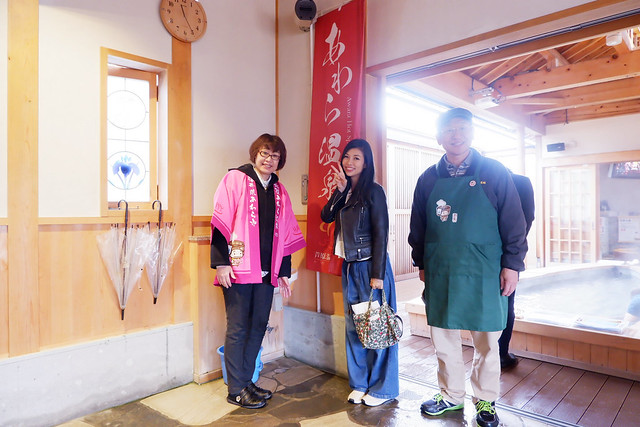
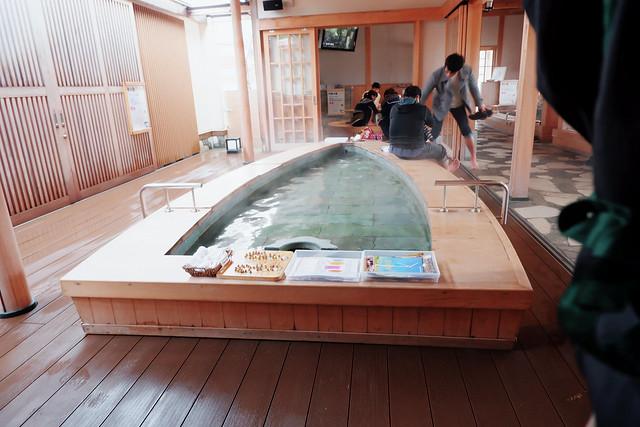
After checking in and if you still have some time to spare, do check out this free public foot bath located just in front of Awara Yunomachi station. This wonderful facility offers several foot baths which are of different temperature.
DAY 5
How time flies even when you travel virtually! Now are are into the final day of our trip and let’s hop on the shuttle bus and take a short train ride on Hokuriku Main Line back to Fukui Station.
SEE: Fukui Station
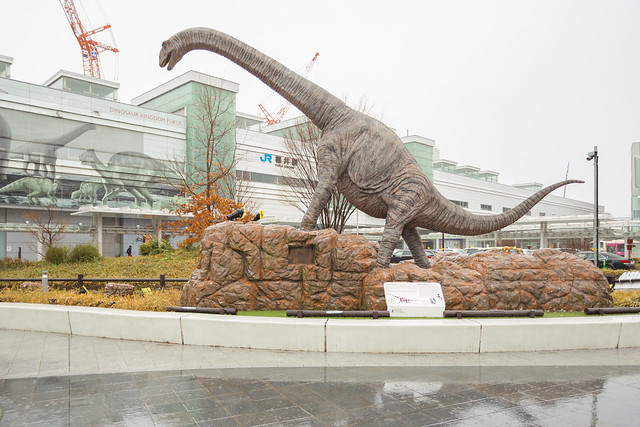
What? Jurassic in Japan??
Yes! Did you know that Katsuyama City in Fukui Prefecture is Japan’s most prominent dinosaur fossil discovery site? Right at Fukui Station’s West Exit, you can see a 10-meter model of Fukuititan, one of the dinosaur fossils found in Fukui. It’s worth it to come to the station even just for the ‘grams!
SEE: Yokokan Garden
Have some time to spare? Take a relaxing stroll at this garden near the station before heading to your next destination.
SEE: Fukui Prefectural Dinosaur Museum
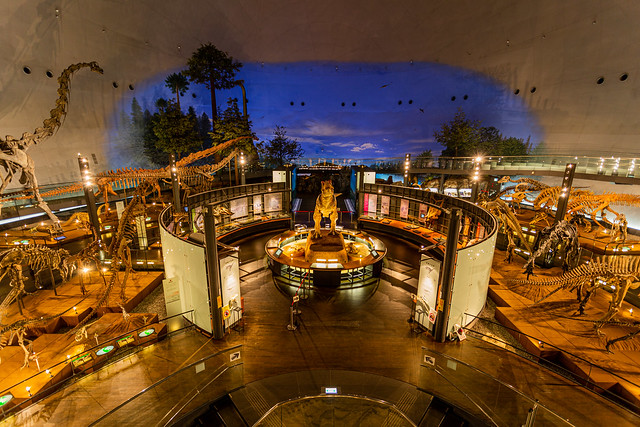
If you want to learn more about the Fukui dinosaurs, you can head to the Fukui Prefectural Dinosaur Museum, located about 1-hour away from Fukui Station. This museum, located in Katsuyama City, is recognized as one of the top dinosaur museums in the world and is the largest of its kind in Japan.
Currently, they only let visitors who already reserved a ticket to get in, in order to prevent the spreading of COVID-19.
EAT: Dino Cafe
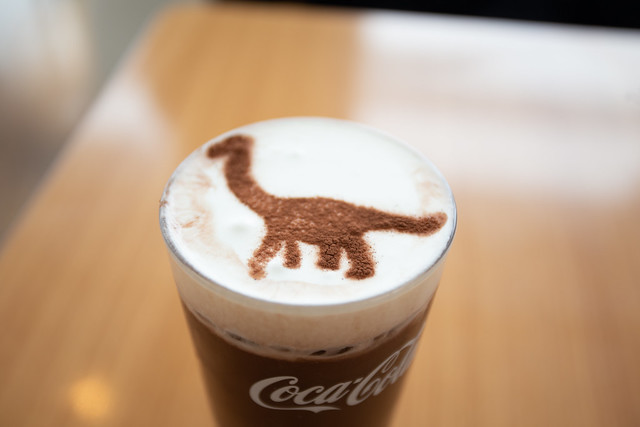
Indulge in an adorable dino fare featuring all these extinct creatures. Dino enthusiasts, be it adult or junior, would enjoy a roarsome time here.
About Takayama-Hokuriku Area Tourist Pass
If you’re planning to explore Japan’s Central region, this tourist pass would be your golden passport. Aside from convenience, it can also help you save on transportation cost. Plan your trip well and make the most of it for 5 consecutive days.
You can purchase it on the website below at 15,280 Yen for adults and 7,640 for children.
For more details about the Pass please check this link:
Takayama-Hokuriku Area Tourist Pass
Tips for the trip:
-Once arrived at Nagoya Station, you can exchange your Takayama-Hokuriku Area Tourist Pass at the JR counter. Also, Tourist Pass holders will be able to go pass the automatic gate from March 2021.
-Stay at a hotel near train stations so you can leave your luggage there and go sightseeing. Otherwise, there are also various coin lockers available at stations and popular tourist spot (ie, Shirakawago).
-Be sure to reserve your seats on the bus to and fro Shirakawago since this is an eternally popular tourist spot!
-Tourist Pass holders can reserve seats on Limited Express train but need to use the non-reserve seats on Shinkansen trains.
That’s all everyone for today. I thank you for joining this amazing virtual tour with me. Till next time guys!
PS: If you enjoy this article, it would mean the world if you could help me support Japan by buying a daikon!



